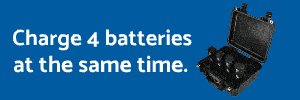You are using an out of date browser. It may not display this or other websites correctly.
You should upgrade or use an alternative browser.
You should upgrade or use an alternative browser.
Do you fly in the rain?
- Thread starter Kyle76
- Start date
Fred Garvin
Well-Known Member
- Joined
- Jan 3, 2019
- Messages
- 497
- Reaction score
- 544
- Location
- DFW Metroplex
- Website
- orbisdroneservices.com
shooter
Well-Known Member
- Joined
- Jan 5, 2018
- Messages
- 129
- Reaction score
- 67
- Age
- 73
- Location
- Northern New Mexico, USA
- Website
- www.lanl.gov
Ajkm
Well-Known Member
Simply tell them that flying is "weather dependent", and that rain/fog is a no-go. And before it's suggested, as I'm sure it's going to be in this thread, no I won't rely on a third-party raincoat for an expensive drone...
clolsonus
Well-Known Member
- Joined
- Feb 22, 2019
- Messages
- 229
- Reaction score
- 148
- Age
- 55
I flew my fixed wing drone on a winter day with light (almost imperceptible) drizzle. Looking at your car windshild there were a few tiny specs of precip showing up. Temps on the ground were slightly above freezing. I figured I was fine to fly. After an hour flight I took over manual control to land in a really tight constrained area and nose just dropped. I had to hold a ton of up elevator and a lot of power to fly the approach. Everything ended fine, but when I walked over to pick up the airplane, the front 1/3 of everything was sheeted in ice. Completely messed up the CG. I feel a little lucky things didn't end worse, and hopefully I learned something that day about weather. I did get 2,500 24 megapixel images and made a great map, so it all worked out.
Ajkm
Well-Known Member
The issue is that many drone pilots really don't seem to understand when icing conditions are present - and forget (or don't know) that the air temperature does not need to be below 0ºC/32ºF for icing to occur. There doesn't even need to be rain, though, if it is raining and the rest of the conditions are right, icing will likely occur. This is why there is a great deal of material on meteorology on drone licensing exams - which is frequently met with complaints about "why on earth do I need to know this?"I flew my fixed wing drone on a winter day with light (almost imperceptible) drizzle. Looking at your car windshild there were a few tiny specs of precip showing up. Temps on the ground were slightly above freezing. I figured I was fine to fly. After an hour flight I took over manual control to land in a really tight constrained area and nose just dropped. I had to hold a ton of up elevator and a lot of power to fly the approach. Everything ended fine, but when I walked over to pick up the airplane, the front 1/3 of everything was sheeted in ice. Completely messed up the CG. I feel a little lucky things didn't end worse, and hopefully I learned something that day about weather. I did get 2,500 24 megapixel images and made a great map, so it all worked out.
@Kyle76 Also one must consider the part 107 visibility requirement of 3sm.
Not only does video / photographs normally look poor, the drone's electronics in most consumer/prosumer crafts aren't designed to be wet. Some have a rating for faul weather, but these aren't typically used for photography and more focused for SAR or Ag environments.
Now.. just before or after a rain... that can provide some great images of skies, colors, etc.
Now.. just before or after a rain... that can provide some great images of skies, colors, etc.
Fred Garvin
Well-Known Member
- Joined
- Jan 3, 2019
- Messages
- 497
- Reaction score
- 544
- Location
- DFW Metroplex
- Website
- orbisdroneservices.com
Now.. just before or after a rain... that can provide some great images of skies, colors, etc.
This ^^ This ^^ THIS! ^^^
We have very strict Wx minimums and have no problem explaining to the customer Wx is the one item we can NOT control and will not budge.
Next "rain pics" (unless you happen to be taking only NIDAR images ) usually look horrible and it only takes a single drop on the lens to ruin any would-be great pics.
Electronics and Moisture (rain/fog/sleet/snow) do not mix. A Few years ago I lost a VERY nice stunt plane (R/C) flying in a mist. Others kept telling me it was a bad idea but I felt like the electronics were well enough protected inside the fuselage that a mist wouldn't be a problem. 10 minutes and a black plastic garbage bag later I suffered the consequences of my stupidity. It was a beautiful stunt plane painted(covered) to look like the America flag waving in the wind and was destroyed when it pancaked into the ground at a very high rate of speed due to loss of control most likely from moisture incursion inside the electronics.
Lastly, if you're in the USA (and Kyle is in North Carolina like me) you must adhere to Wx minimums. The rule to pay attention to here is
§ 107.51
Next "rain pics" (unless you happen to be taking only NIDAR images ) usually look horrible and it only takes a single drop on the lens to ruin any would-be great pics.
Electronics and Moisture (rain/fog/sleet/snow) do not mix. A Few years ago I lost a VERY nice stunt plane (R/C) flying in a mist. Others kept telling me it was a bad idea but I felt like the electronics were well enough protected inside the fuselage that a mist wouldn't be a problem. 10 minutes and a black plastic garbage bag later I suffered the consequences of my stupidity. It was a beautiful stunt plane painted(covered) to look like the America flag waving in the wind and was destroyed when it pancaked into the ground at a very high rate of speed due to loss of control most likely from moisture incursion inside the electronics.
Lastly, if you're in the USA (and Kyle is in North Carolina like me) you must adhere to Wx minimums. The rule to pay attention to here is
§ 107.51
- With less than 3 statute miles of visibility
- Within 500 feet vertically or 2000 feet horizontally from clouds






